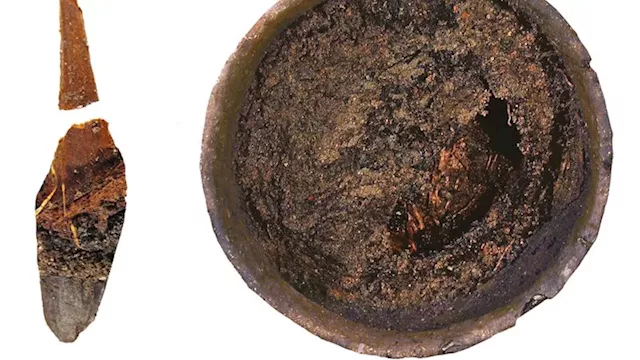Tom Metcalfe is a freelance journalist and regular Live Science contributor who is based in London in the United Kingdom. Tom writes mainly about science, space, archaeology, the Earth and the oceans. He has also written for the BBC, NBC News, National Geographic, Scientific American, Air & Space, and many others.
Low tides on Ireland's western coast have revealed the remains of defensive walls that are likely Bronze Age ramparts.
The ramparts are about halfway across the roughly 1-mile-long isthmus; the remains of a wall nearest the mainland are about 590 feet long, while the remains of a larger wall nearest the island are about 820 feet long, he said.Image 1 of 3Both ramparts cut across the isthmus and seem to have served to protect the isthmus and island from attacks from the mainland.
By submitting your information you agree to the Terms & Conditions and Privacy Policy and are aged 16 or over.Ancient landscapeClew Bay features more than 300 small islands that were created when the sea flooded the coastal landscape thousands of years ago. The size and scale of the Collanmore ramparts suggest the island was of major strategic importance when they were built, although the island is mostly deserted today. It may have been the site of a large Bronze Age hillfort, as such settlements were common throughout Ireland at the time.
United States Latest News, United States Headlines
Similar News:You can also read news stories similar to this one that we have collected from other news sources.
 Bronze Age graves hint at existence of mythical warrior women of GreeceBits of evidence emerging from the earth are revealing the truth about the legendary tribe of women.
Bronze Age graves hint at existence of mythical warrior women of GreeceBits of evidence emerging from the earth are revealing the truth about the legendary tribe of women.
Read more »
 Remains of an ancient dinner still sit in a Bronze Age village 2,850 years laterThis week, explore “Britain’s Pompeii,” learn why some pandas are brown, look for a new star in the night sky, meet an ancient version of Kermit the Frog, and more.
Remains of an ancient dinner still sit in a Bronze Age village 2,850 years laterThis week, explore “Britain’s Pompeii,” learn why some pandas are brown, look for a new star in the night sky, meet an ancient version of Kermit the Frog, and more.
Read more »
‘Britain’s Pompeii’ reveals Bronze Age village frozen in timeEditor&8217;s note: Sign up for CNN’s Wonder Theory science newsletter. Explore the universe with news on fascinating discoveries, scientific advancements and more. (CNN) — It’s late summer 2,850 years ago. A fire engulfs a stilt village perched above a boggy, slow-moving river that weaves through the wetlands of eastern England.
Read more »
 ‘Britain’s Pompeii’ reveals Bronze Age village frozen in timeAn analysis of the exceptionally well preserved remains of a Bronze Age village reveals the cozy domesticity of life in Britain 2,850 years ago.
‘Britain’s Pompeii’ reveals Bronze Age village frozen in timeAn analysis of the exceptionally well preserved remains of a Bronze Age village reveals the cozy domesticity of life in Britain 2,850 years ago.
Read more »
 Amazingly preserved Bronze Age village reveals life in ancient EnglandA settlement in the east of England burned down in a fire 3000 years ago, falling into a muddy waterway that preserved everything inside the houses including tools, fabric, cooking pots and more
Amazingly preserved Bronze Age village reveals life in ancient EnglandA settlement in the east of England burned down in a fire 3000 years ago, falling into a muddy waterway that preserved everything inside the houses including tools, fabric, cooking pots and more
Read more »
